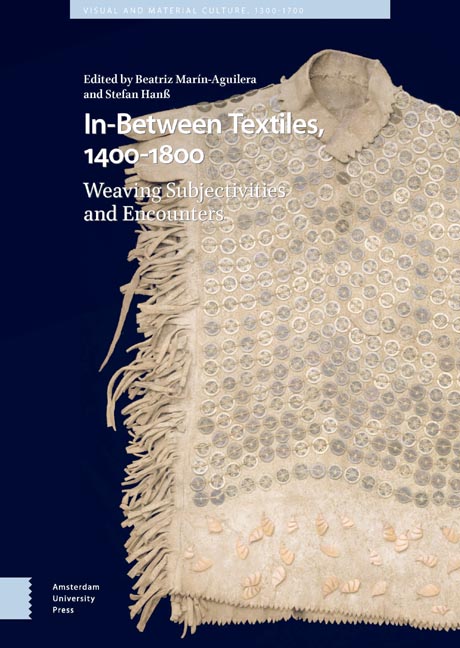Book contents
- Frontmatter
- Dedication
- Miscellaneous Frontmatter
- Table of Contents
- List of Illustrations
- Acknowledgements
- 1 Subjectivities In-Between Early Modern Global Textiles
- Part I Unhomeliness, Mimicry, and Mockery
- Part II The Material Enunciation of Difference
- Part III Identity Effects In-Between the Local and the Global
- Part IV Material Translation and Cultural Appropriation
- Archives, Libraries, and Museums (Abbreviations)
- Select Bibliography
- Index
6 - Abolitionism and Kente Cloth: Early Modern West African Textiles in Thomas Clarkson’s Chest
Published online by Cambridge University Press: 14 October 2023
- Frontmatter
- Dedication
- Miscellaneous Frontmatter
- Table of Contents
- List of Illustrations
- Acknowledgements
- 1 Subjectivities In-Between Early Modern Global Textiles
- Part I Unhomeliness, Mimicry, and Mockery
- Part II The Material Enunciation of Difference
- Part III Identity Effects In-Between the Local and the Global
- Part IV Material Translation and Cultural Appropriation
- Archives, Libraries, and Museums (Abbreviations)
- Select Bibliography
- Index
Summary
Abstract
This chapter examines hand-woven eighteenth-century textiles from West Africa, including the oldest dated extant kente cloth from Ghana and Togo, formerly owned by the English abolitionist Thomas Clarkson. This chapter argues that such textiles had the power to question racial regimes. As in-between cloth, these textiles shaped the agenda of abolitionist discourses in Britain in the two decades leading up to the 1807 Abolition Act. Through detailed textile analysis and ethnographic fieldwork, this chapter recovers African perspectives in a crucially transformative moment in history.
Keywords: kente; abolitionism; Thomas Clarkson; decolonisation; racial regimes
Introduction
Early modern West African kente textiles hardly survive. In almost three decades of research on West African textiles, the only time I encountered actual hand-woven eighteenth-century textiles from Ghana and Togo was in a small museum in Wisbech, the birthplace of the English abolitionist Thomas Clarkson (1760–1846, Fig. 6.1). At the end of the eighteenth century, Clarkson travelled across England to collect evidence for the anticipated 1788/89 Privy Council enquiry into the transatlantic slave trade while also giving lectures to mobilise public opinion in support of ending human trafficking. As part of these abolitionist activities, he assembled a wooden chest with natural specimens and manufactured “things” brought by English merchant and slave ships from their West African journeys, including several samples of what he called “native” cloth, a so far overlooked textile repository. Four of the cloth samples include machine-woven red yarn, unravelled from imported European or Indian cloth, the oldest extant cloth with red unravelled yarn, mentioned in countless eighteenth-century European sources. One of these cloths has a supplementary warp, a feature considered unique in West Africa to so-called Ewe kente or kete (Figs. 6.2–3). If the sample is indeed from the Ewe-speaking region in southern Togo or south-east Ghana, it would be the oldest dated extant kente cloth.
The chest’s artefacts provide new insights into the history of textiles from eighteenth-century West Africa. I present an in-depth textual, visual, and material analysis based on ethnographic fieldwork and fibre analysis. The textiles from Clarkson’s chest, however, first and foremost make painfully tangible the transatlantic slave trade. These were artefacts directly made, used by, or linked to enslaved people.
- Type
- Chapter
- Information
- In-Between Textiles, 1400-1800Weaving Subjectivities and Encounters, pp. 139 - 162Publisher: Amsterdam University PressPrint publication year: 2023



